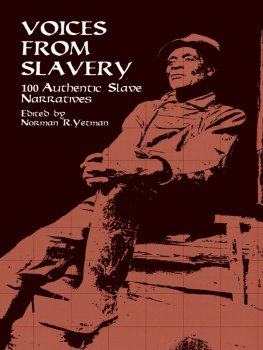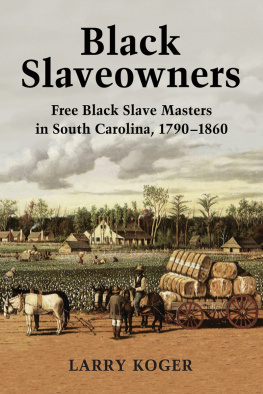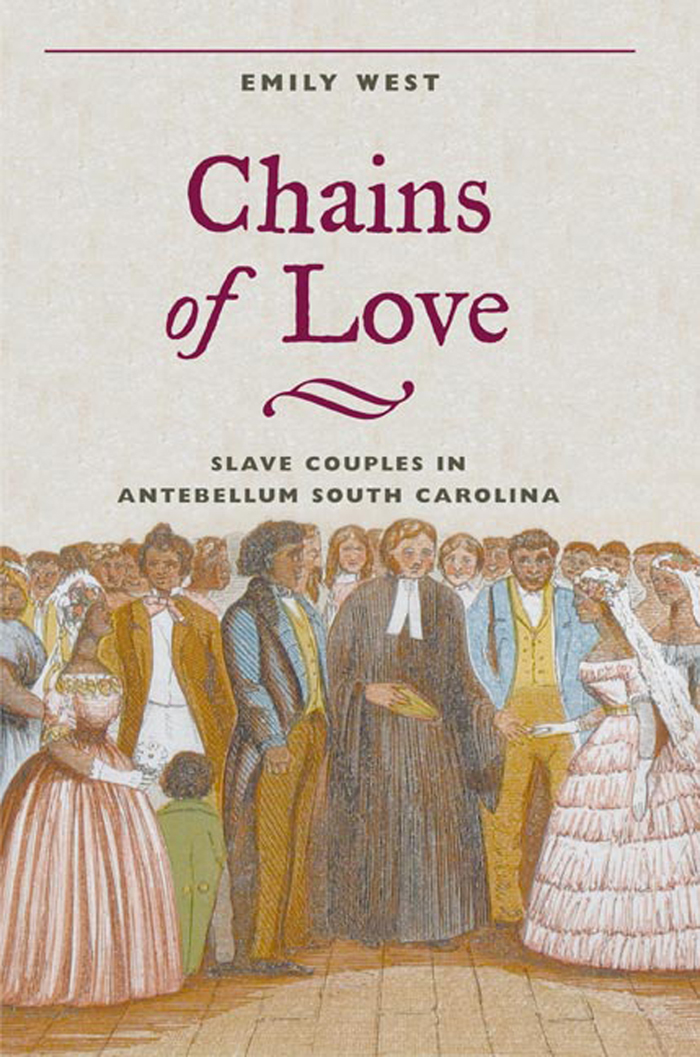Emily West - Chains of Love: Slave Couples in Antebellum South Carolina
Here you can read online Emily West - Chains of Love: Slave Couples in Antebellum South Carolina full text of the book (entire story) in english for free. Download pdf and epub, get meaning, cover and reviews about this ebook. year: 2010, publisher: University of Illinois Press, genre: Home and family. Description of the work, (preface) as well as reviews are available. Best literature library LitArk.com created for fans of good reading and offers a wide selection of genres:
Romance novel
Science fiction
Adventure
Detective
Science
History
Home and family
Prose
Art
Politics
Computer
Non-fiction
Religion
Business
Children
Humor
Choose a favorite category and find really read worthwhile books. Enjoy immersion in the world of imagination, feel the emotions of the characters or learn something new for yourself, make an fascinating discovery.

- Book:Chains of Love: Slave Couples in Antebellum South Carolina
- Author:
- Publisher:University of Illinois Press
- Genre:
- Year:2010
- Rating:5 / 5
- Favourites:Add to favourites
- Your mark:
Chains of Love: Slave Couples in Antebellum South Carolina: summary, description and annotation
We offer to read an annotation, description, summary or preface (depends on what the author of the book "Chains of Love: Slave Couples in Antebellum South Carolina" wrote himself). If you haven't found the necessary information about the book — write in the comments, we will try to find it.
Historians have traditionally neglected relationships between slave men and women during the antebellum period. In Chains of Love, historian Emily West remedies this situation by investigating the social and cultural history of slave relationships in the very heart of the South.
Focusing on South Carolina, West deals directly with the most intimate areas of the slave experience including courtship, love and affection between spouses, the abuse of slave women by white men, and the devastating consequences of forced separations. Slaves fought these separations through cross-gender bonding and cross-plantation marriages, illustrating Wests thesis about slave marriage as a fierce source of resistance to the oppression of slavery in general.
Making expert use of sources such as the Works Progress Administration narratives, slave autobiographies, slave owner records, and church records, this book-length study is the first to focus on the primacy of spousal support as a means for facing oppression. Chains of Love provides telling insights into the nature of the slave family that emerged from these tensions, celebrates its strength, and reveals new dimensions to the slaves struggle for freedom.
| Contents Acknowledgments Introduction 1. Courtship and Marriage 2. Family Life 3. Work, Gender and Status 4. Interracial Sexual Contact 5. Enforced Separations Conclusion Appendixes 1. Criteria Used in the Construction of a Database Relating to the Comments of the South Carolina WPA Respondents 2. Interracial Sexual Contact in the WPA Narratives Bibliography Index
Library of Congress Subject Headings for this publication: Slaves South Carolina Social conditions 19th century, Slaves South Carolina Family relationships History 19th century, Couples South Carolina History 19th century, Man-woman relationships South Carolina History 19th century, Slaves South Carolina Biography, Slavery South Carolina History 19th century, Plantation life South Carolina History 19th century, South Carolina Race relations, South Carolina History 1775-1865|
Emily West is a lecturer in American history at the University of Reading (UK).
Emily West: author's other books
Who wrote Chains of Love: Slave Couples in Antebellum South Carolina? Find out the surname, the name of the author of the book and a list of all author's works by series.





 This book is printed on acid-free paper.
This book is printed on acid-free paper.